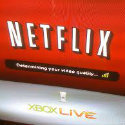In a fresh forecast, Ovum's Tony Gunnarsson predicts that Netflix will see its subscriber growth plateau early next decade and then start experiencing sub losses as OTT skinny bundles take root.

While Netflix may be sitting awfully pretty right now with 125 million subscribers throughout the world, some traditional pay-TV providers may end up having the last laugh after all.
So says Tony Gunnarsson, principal analyst of pay-TV and OTT video at Ovum Ltd. In a new TV market forecast released today, he predicts that Netflix Inc. (Nasdaq: NFLX) and other major standalone subscription video-on-demand (SVoD) services will see their growth rates subside over the next few years as newer OTT skinny-bundle packages of linear TV channels surge in popularity. In fact, he thinks Netflix will even start shedding subscribers by the early to middle 2020s as more and more TV viewers turn to subscription-based linear streaming video, or "SLIN," platforms like AT&T's DirecTV Now and Dish Network's Sling TV in the US. (See No Stopping Netflix.)
"Netflix today is the DVD of yesteryear," Gunnarsson said last week in an interview with Light Reading, which, like Ovum, is owned by Informa plc . "It's nonsense that it's not going to go into decline eventually … Netflix has reached the top ceiling of how big they can be."
Gunnarsson believes that SLIN services, which are frequently backed by such traditional pay-TV providers as AT&T Inc. (NYSE: T) and Dish Network LLC (Nasdaq: DISH), will overtake both traditional pay-TV providers and online SVoD services by 2022. While Netflix and other SVoD services will continue to steadily add subscribers for the next few years, their growth rates will be dwarfed by the skinny bundle services now popping up across the globe.
"We think the new linear services will trim OTT growth now," he said, while noting that it's still "early days" for the skinny bundle packages. "There is life still in linear TV and traditional platforms,"
In his new report, Gunnarsson projects that SLIN services will end up controlling 17% of the huge combined global pay-TV and OTT video market in 2022, up from 13% today, as cable, satellite and IPTV providers all continue to launch their own skinny-bundle services. In contrast, he sees cable TV's market-leading share slipping from 32% globally today to 24% by 2022 while Netflix, Amazon Video and other SVoD services all slightly boost their shares but fail to match SLIN's growth. (See Ovum: US Pay-TV Crashing but May Not Burn .)
"The future will not be dominated by SVOD and Netflix," he writes. "Just as on-demand became part of the mainstream TV offer, linear and live TV are becoming part of mainstream online offerings. We are entering a post-OTT era, where all types of services will be available on all types of network and device."
Boost your understanding of cable's pioneering virtualization efforts, examine early trials and pilots and look at what comes next. You're invited to attend Light Reading's Virtualizing the Cable Architecture event, a free breakfast panel at SCTE/ISBE's Cable-Tec Expo on Oct. 23 in Atlanta.
Despite the vigorous push by Amazon.com Inc. (Nasdaq: AMZN) to duplicate Netflix's successful global expansion strategy, Gunnarsson doesn't think Amazon can come close to matching its Silicon Valley rival. While Amazon now ranks third in the world among SVoD services with 60 million subscribers, he notes that Amazon still has fewer than half as many video customers as Netflix and nowhere near the global reach of Netflix yet.
"If they [Amazon] were to replicate the Netflix model globally, they'd really have to up their game," he said. "It's going to take Amazon a long time to even try and catch up with Netflix on a world basis."
— Alan Breznick, Cable/Video Practice Leader, Light Reading
About the Author(s)
You May Also Like










